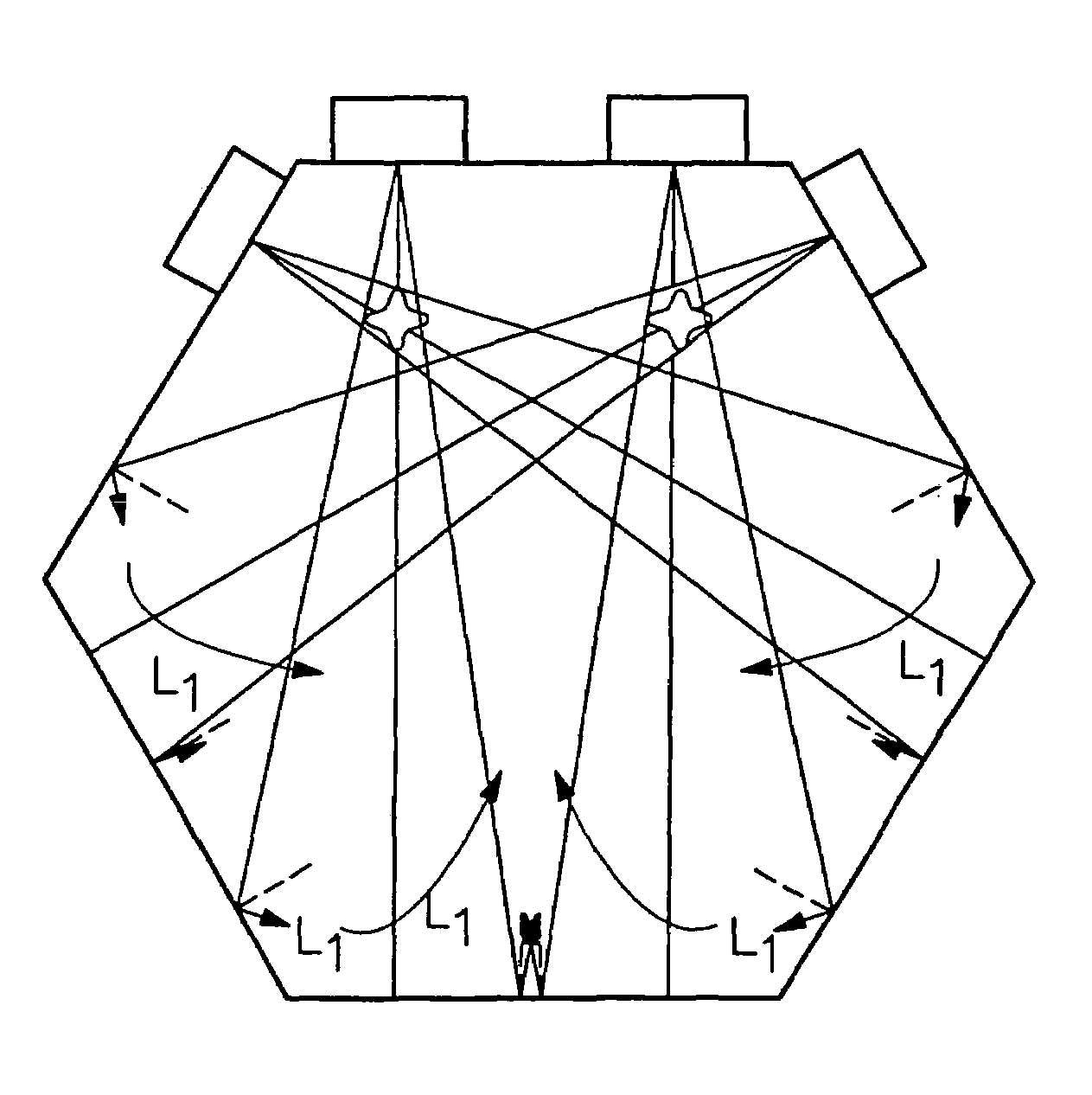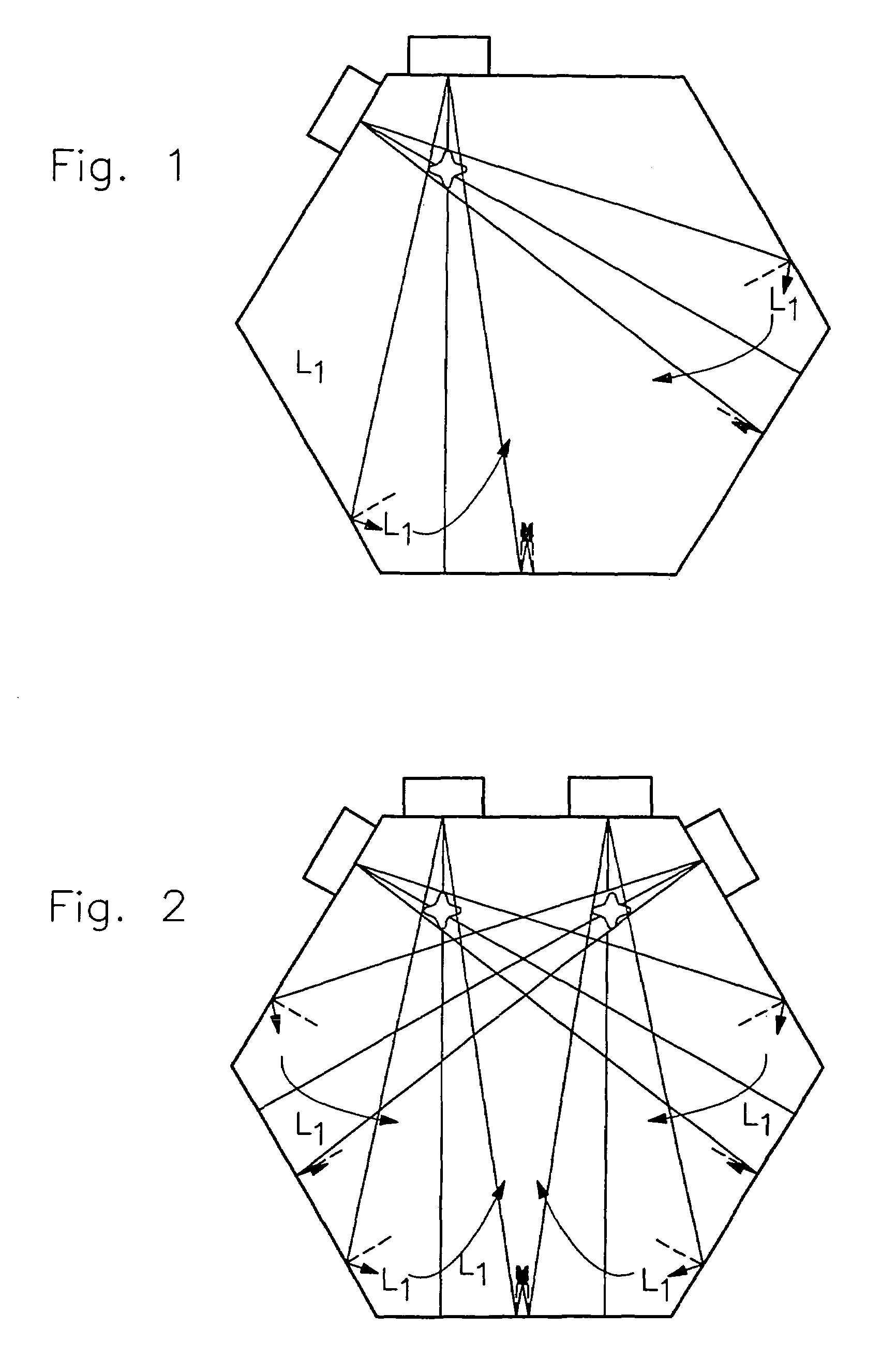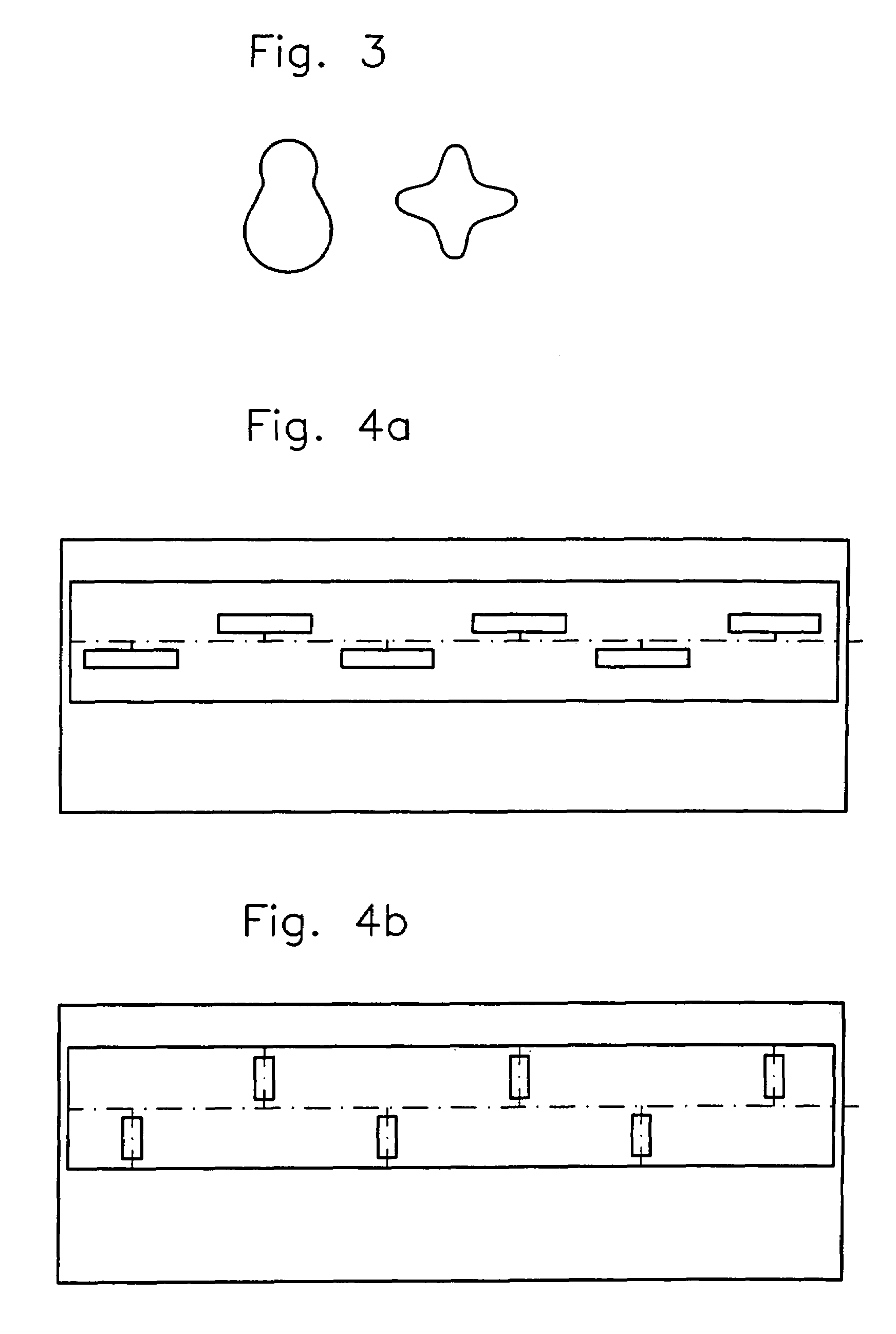Microwave resonator and method of operating microwave resonator
a microwave resonator and microwave technology, applied in the field of microwave resonators, can solve the problems of not being usable, the type of in-coupling cannot be used as individual resonators, and food exposed to microwaves in the resonator chamber is not uniformly heated, etc., and achieves the effect of high quality
- Summary
- Abstract
- Description
- Claims
- Application Information
AI Technical Summary
Benefits of technology
Problems solved by technology
Method used
Image
Examples
Embodiment Construction
[0050]For microwave technical applications, with a justifiable technical expenditure, the microwave range of 10 MHz to 30 GHz, preferably the range of 100 MHz to 25 GHz, the latter being equivalent to the wavelength in air / vacuum of about 33 cm to 1.2 cm is appropriate. In this band, many ranges are used for the communication in many ways so that, as a result, only the ISM frequencies 915 MHz, 2.45 GHz (household microwaves), 5.85 GHz and 24.15 GHz can be considered for utilization. Resonator geometries are adapted therefore to the associated wavelengths 32.8 cm, 12.2 cm, 5.1 cm and 1.2 cm.
[0051]In the present case, below the prismatic resonator with a uniform hexagonal cross-section and the process line derived therefrom will be described. The resonator is operated with 2.45 GHz. It includes such dimensions that in the resonator volume, the desired, above-mentioned high mode operation is formed with the 2.45 GHz microwave in-coupling. The resonator consists of stainless steel. In t...
PUM
 Login to View More
Login to View More Abstract
Description
Claims
Application Information
 Login to View More
Login to View More - R&D
- Intellectual Property
- Life Sciences
- Materials
- Tech Scout
- Unparalleled Data Quality
- Higher Quality Content
- 60% Fewer Hallucinations
Browse by: Latest US Patents, China's latest patents, Technical Efficacy Thesaurus, Application Domain, Technology Topic, Popular Technical Reports.
© 2025 PatSnap. All rights reserved.Legal|Privacy policy|Modern Slavery Act Transparency Statement|Sitemap|About US| Contact US: help@patsnap.com



